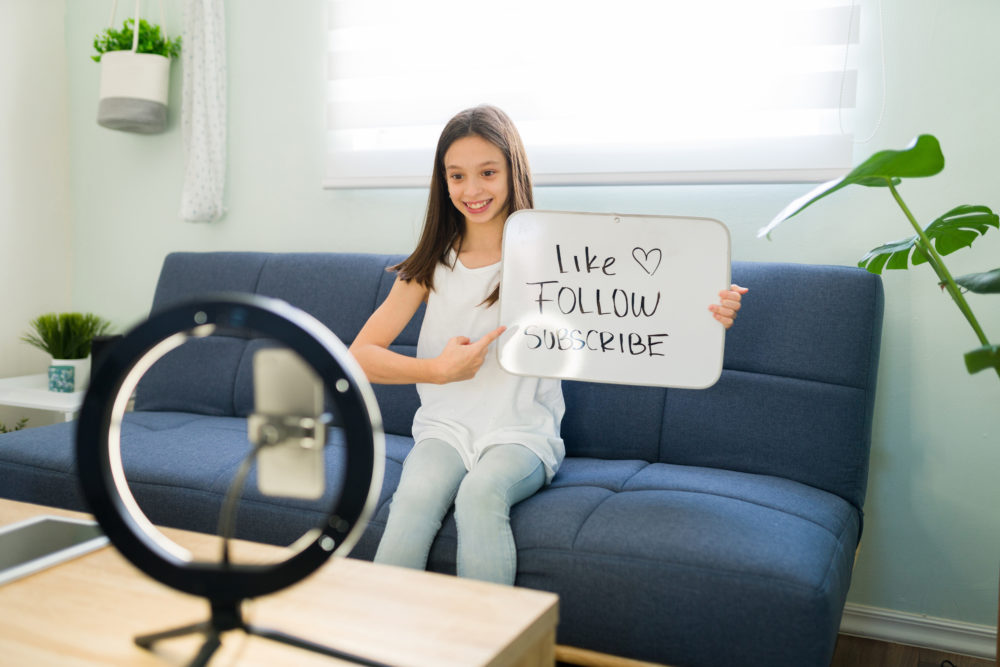Love them or hate them, influencers are here to stay. Influencer marketing has become a powerful field in recent years, with many influencers boasting significant followings—and earning hefty paychecks for access to their platforms. Influencer content can take any number of forms, but video is creeping up in use, especially with the rise of short-form video platform TikTok.
Influencer marketing and video marketing are often thought of as two separate arenas—and they can be—but they become especially effective when combined. Influencer content often reaches even more consumers when it’s published in the form of a video, and video content often draws a larger audience when it’s shared by influencers.
Below, we’ll dive into the two primary ways these fields overlap and how brands can use each scenario to their advantage.
Overlap #1: Influencers make their own video content to strengthen their personal brands.
First, let’s talk about how video marketing is useful to influencers. Influencer marketing capitalizes on the fact that content creators develop personal brands over time. These content creators become influencers as they earn a following with these personal brands, and thus the people behind the platform suddenly have a reach (and influence, hence the term influencer) by way of the account’s followers.
Building and maintaining this following over time is a concentrated effort for many influencers, but video content can make it easier. Video has proven benefits over written text or static images. It’s a valuable tool for getting audiences to retain a message. It’s highly shareable. It’s favored by many social algorithms. (See these and other stats and their sources here.)
Perhaps more importantly, video content feels authentic to viewers. This helps influencers deepen their relationships with followers and makes the connection feel more personal. This is important—especially since, in most cases, the tangible extent of the connection is a “follow” or “subscribe” button on a digital platform. Video helps bridge that gap, making a digital relationship feel more significant.
As you can see, video is a powerful tool for amplifying a message and building a real connection with viewers. It’s no surprise, then, that influencers benefit from video content. Arguably the two most important elements to being a successful influencer are the ability to amplify a message and the ability to build a connection with audiences. So, utilizing video content over text or image-based content can help an influencer build a strong brand quickly and effectively.

Many influencers have learned basic video production skills on an as-needed basis, but there’s a learning curve to production. For influencers who aren’t as familiar with the technicalities of production, partnering with a production company can be a great way to elevate production value. What’s more, this choice can pay for itself and then some. Influencers often make the majority of their income from brand partnerships, and brands typically pay more when influencers are known for high-quality content. This increase in an influencer’s worth often offsets the increased cost associated with hiring professional production teams, making it a net positive for everyone involved.
Overlap #2: Brands work with influencers in creating video content that promotes their product or service.
Next, let’s look at the other integration between influencer marketing and video marketing: brands hiring influencers to promote their offering using video content.
There are two common ways brands will approach this relationship. The first is to partner with an influencer who will then make new video content that promotes the brand. If you’ve ever seen an influencer doing an “unboxing” video or testimonial video, you’ve watched this type of content.
Another example of this type of content is maybe the most well-known influencer video of all time: the Fyre Festival promotional video. As you can see in the clip below, the influencers were specifically brought in to be featured in this video spot; the video couldn’t have existed without their involvement.
The other way brands can approach this process is by partnering with influencers who then promote the brand’s existing content. Rather than the influencer being involved in the content creation, the value here comes primarily through the influencer’s reach. The brand’s content may have already existed (and may have even already been promoted through the brand’s standard channels), but the influencer partnership provides a new avenue for the brand to reach viewers.
Final Thoughts
Regardless of the nature of the overlap between influencer marketing and video marketing, the combination is a match made in heaven. Brands looking to partner with influencers should push for the inclusion of video content in the partnership agreement so that they can take advantage of video’s many benefits compared to text or images. With video, both the brand and the influencer benefit. Time to get filming!


